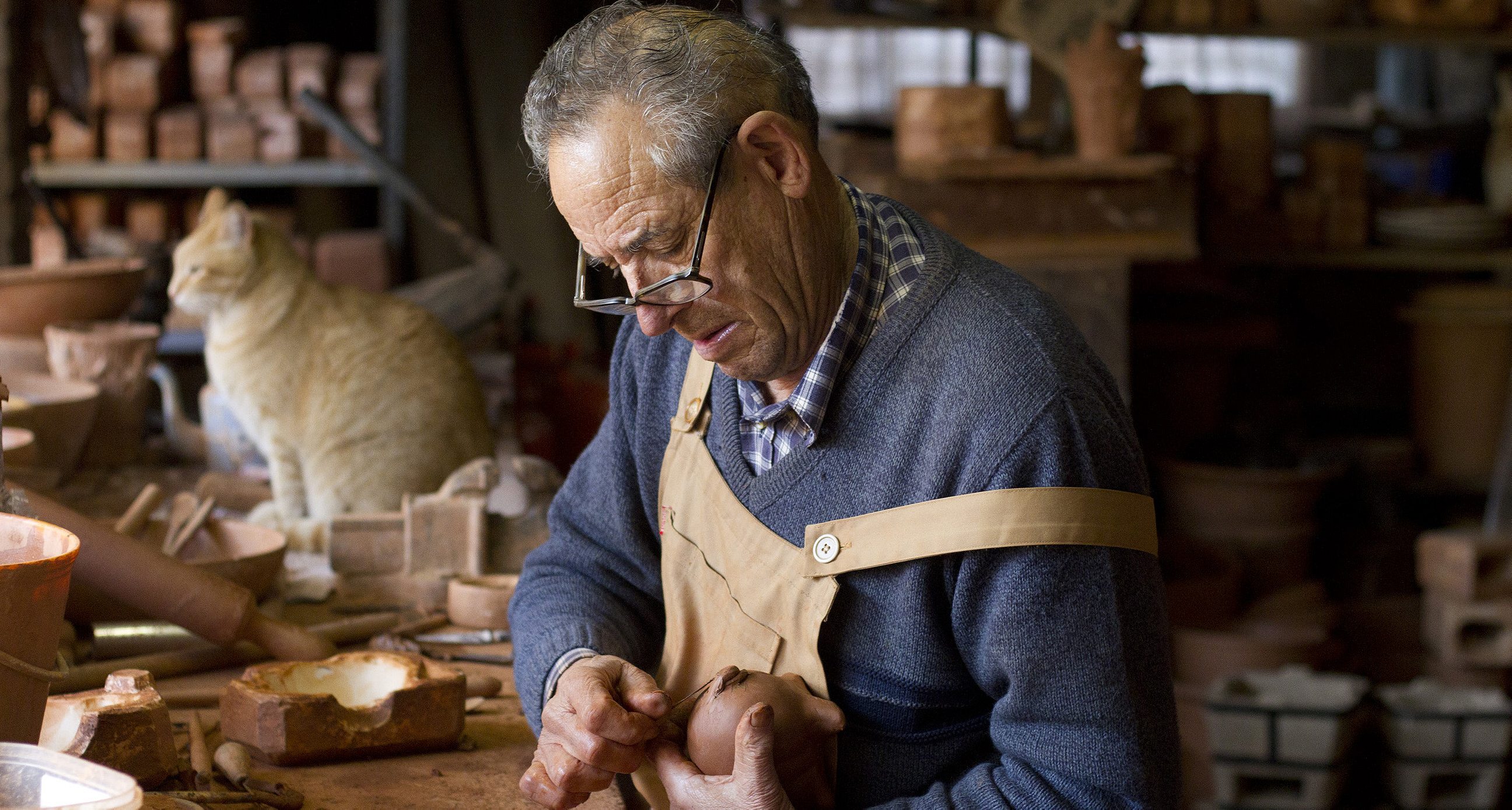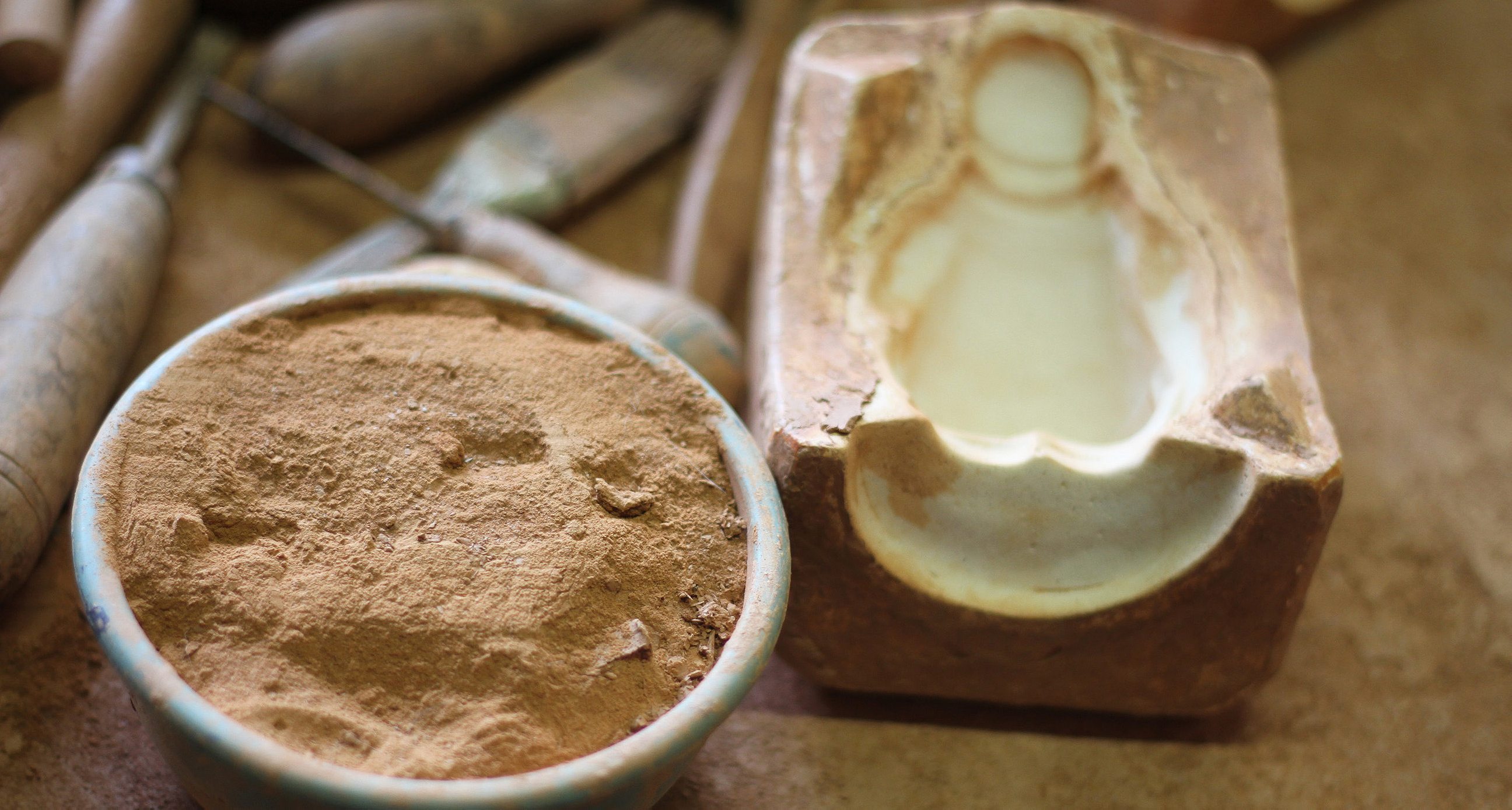The shitting figurine has been a staple of the holiday season in Catalonia for over 300 years.
Somewhere in a distant stable, beyond the watchful shepherds and the soaring angels, beyond the Magi and their plumes of burning incense, beyond the thirsty camels, wandering sheep, and stoic donkey, beyond the manger where a newborn baby lies with the weight of the world on his shoulders, there is a man in a red stocking cap ducking behind a bale of hay, pants around his ankles, evacuating his bowels in the open air.
This, at least, is the birth of Christ as imagined by the Catalans. The tradition of the caganer—literally the shitter, the pooper, or the defecator, however you’d like to frame it—surfaced sometime in the late 17th or early 18th century. As idiosyncratic cultural practices tend to go, the caganer ritual has no clear creation story: some say the figurine was placed in the nativity scene as a nod towards naturalism, the caganer on hand to fertilize the ground and symbolize growth and regeneration; others say it was a dose of realism in an otherwise idealized scene, a reminder that Christ was very much one of us. What is indisputable, though, is that Christmas in Catalonia would not be the same without the shitting statue.

Josep Roca made his first caganer in 1991, the day his dad died. As the family gathered at the Roca home to shroud the body and prepare it for burial, Josep escaped to the family workshop and set about sculpting. The figure, created from clay, was as traditional as caganers come: a shepherd, dressed in peasant garb, in squatting stance, ass hovering over his hindquarters.
In the two decades since, Josep has sculpted thousands of caganers of all shapes and affiliations: singers and starlets, nurses and nuns, devils and dictators. His workshop doubles as a dusty museum of politics and pop culture. You’ll find obscure Spanish politicians of the past decade, one-hit wonders, old futból stars long since retired.
If you closed your eyes and tried to picture a maker of caganers, Josep is exactly the man your imagination would conjure up: tall and lanky, with a back bent like a candy cane from too many years hunching over his creations. He works in overalls, one strap unlatched, with novella-thick glasses that sit permanently at the tip of his nose. On his hands you’ll find orange deposits of clay built up like tree rings under his fingernails.
“I come from a family of clay workers. My dad worked in clay. My grandfather was from 1880, and in that time when there was nothing to do once it got dark so he made figures of saints and sold them near the cathedral.”
Josep’s workshop reflects the kind of controlled chaos you’d expect from a third-generation sculptor: workbenches crowded with chisels and scalpels, buckets of muddy water for smoothing out features, crates of unfinished projects gathering dust in dark corners.
To make a caganer, Josep rips off a hunk of clay from a rectangular slab and thwacks it onto the workshop bench. He flattens it with a dowel to a centimeter’s thickness, divides it into two parts, then works each piece carefully into a mold. The two halves are joined to form the base of the caganer, which is eventually fired in a kiln, the temperature rising gradually over the course of six hours, maxing out at a blistering 1000˚C.
This is the recipe for a basic caganer, stripped of accessories and any identifying features. Together with his son, Joan, he makes about 2,000 of these figurines every holiday season, sold out of his workshop, Terrisseria de Caldes de Montbuí, and at stalls near Barcelona’s two most famous churches: the Cathedral of Santa Eulalia and Gaudi’s sky-scratching Sagrada Familia. Most of these 2,000 statues won’t end up as the classic pipe-smoking, stocking cap-wearing Catalan shepherd; most of these have a more elaborate fate.

Spaniards take shit seriously. Consider its influence on the parlance of our times. When a performer is about to take the stage, you wish her “mucha mierda,” lots of shit, i.e. best of luck. When your buddy announces that he just drank your last beer without asking you, you might respond: me cago en la leche! Literally “I shit in the milk,” one of the Spaniards’ preferred ways to express ire. (Hemingway, who understood Spaniards like few others, captured this colloquialism perfectly in For Whom the Bell Tolls; his band of ill-tempered rebels spend the entire book running around the mountains cursing each other: “I obscenity in thy milk!”)
But when you enter the region of Catalonia, the focus on feces hits new levels of intensity. In Barcelona you’ll find an Institute of Scatological Studies, where the importance of fecal matter in society is analyzed with academic rigor. Come holiday season, the nativity scene figurine is not the only scatological Christmas tradition in play. Kids across the region beat Caga Tío (“shitting dude”), an anthropomorphized log, with oven-warmed sticks until he shits presents.
But the most enduring sign of the Catalan obsession with bodily functions remains the caganer. A society, Amics del Caganer (Friends of the Pooper), exists solely to celebrate the statue’s importance, which they do with public exhibitions and quarterly newsletters. When Barcelona’s local government decided not to place the caganer in the city’s main nativity scene, claiming it would encourage people to shit in the streets, public outcry eventually forced them to reverse their decision. Now even the local Catholic church accepts—if not embraces—the caganer’s role in Catalan Christmas traditions.

“A good caganer stirs up controversy. Bush was always a big seller for us,” says Josep, whose many Bush depictions over the years include one gripping a missile and another being pelted in the head by a shoe. Other big sellers include Fidel Castro, Angela Merkel, Obama, the Catalan independentista, and the entire FC Barca squad. “People gravitate towards figures they either love or hate.”
By Josep’s estimation, there are maybe six workshops in Catalonia dedicated to the caganer craft, but not all live up to the Roca’s exacting standards. The biggest, caganer.com, elicits grunts of disapproval from both Josep and his son. “They steal ideas from us,” Joan says. “We made a Bruce Springsteen caganer and two months later they put out the exact same Bruce Springsteen, only they changed his headband. We have to be very careful.”
Caganers hit a boom period in Catalonia over the past decade, and spotty work—usually being passed off as artisanal in t-shirt shops around Barcelona—abounds. But the defecator is in the details, and the Rocas have an uncanny ability to bring clay to life. Josep and Joan are artists, a father-and-son team that invests ten hours a day in the workshop, molding, painting, and perfecting their miniature creations. A sharp stick gives the caganer his exit point, a bowl of tiny clay penises gives him his sex, and the coiling piles of feces placed at his feet give the whole package a disconcertingly real look. The only thing missing is the smell.
As sound as their basic sculpting techniques may be, it’s the small touches that tell the story with Josep and Joan’s caganers: the Champions League trophy gripped by Lionel Messi, the bag of money in the Spanish politician’s grasp, the elephant foot that sits next to King Juan Carlos (who came under fire for using tax payer money to go on a Botswana hunting expedition earlier this year). In the right hands, the caganer is as much a political statement or cultural harbinger as it is a nativity scene ornament.
For a few extra Euros, Josep and Joan will turn anyone into a caganer. Send them a photo and a few details—a favorite accessory, a list of passions and hobbies—and soon they’ll capture you in clay, ass out to the world, doing what man was made to do. After all, we are, everyone of us, a caganer.
Check out the full slideshow of Josep and Joan’s caganer workshop here.